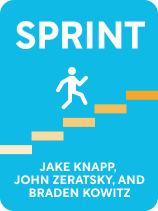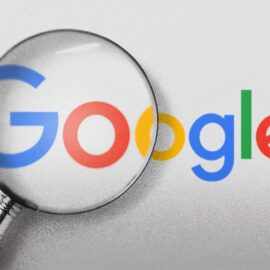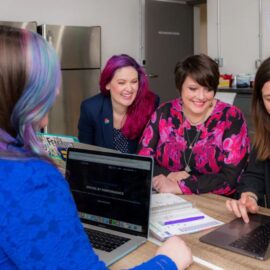

This article is an excerpt from the Shortform book guide to "Sprint" by Jake Knapp, John Zeratsky, and Braden Kowitz. Shortform has the world's best summaries and analyses of books you should be reading.
Like this article? Sign up for a free trial here.
What is customer experience testing? How can you optimize your testing with a Design Sprint?
Jake Knapp’s book Sprint details the process of conducting a Design Sprint to create and test a product prototype. A crucial step in this process is customer experience testing, and Knapp advises creating a flowchart to optimize your user testing.
Keep reading to learn about the Design Sprint process and customer experience testing, according to Knapp.
The Design Sprint
Do you have a product idea you want to test, but you’re not sure if it’s worth the time and the effort? Are you stuck in the middle of a project that seems to be going nowhere? If so, Jake Knapp’s Design Sprint process can help. Knapp developed the Design Sprint while working at Google Ventures, the investment arm of Google’s parent company. His process allows you and your team to build and test a prototype in just a five-day work week. With the help of John Zeratsky and Brian Kowitz, Knapp ran hundreds of successful sprints at Google and other companies like Lego, Airbnb, and Slack.
After a lot of testing, Knapp discovered that five days (Monday through Friday) works best for a Design Sprint timeline. It’s enough time to create a prototype but not long enough for people to lose momentum and focus.
(Shortform note: Jake Knapp may have invented the Design Sprint and settled on its specific five-day timeline, but he didn’t invent the idea of sprints altogether. Traditional sprints were developed as a tool for agile project management in the 1990s by the creators of Scrum, a framework that helps teams structure projects to encourage reflection, experiential learning, and constant improvement. Scrum sprints can be one to two weeks long, during which a team completes a set of previously specified tasks. They’re still widely used, especially by software developers.)
Each day of your sprint starts at 10:00 am and ends at 5:00 pm, broken up by an hour-long lunch. (The exception is Friday, which starts at 9:00 am to give enough time to complete your customer experience testing with five customer interviews.) The six working hours of a sprint are shorter than an average workday to compensate for the intense and focused nature of the tasks.
| Product Development Processes: Sprints vs. Working Backward Some critics argue that the constraints imposed by the shortened timelines of “agile” approaches like sprints suppress growth potential in new products, limit the designers’ ability to improve existing products, and make data from customer experience testing unreliable due to the use of underdeveloped prototypes. One alternative to sprints is a “working backward” approach—coming up with a fully-realized product idea and sticking to that idea as you work to make it a reality. This method is less flexible than sprints, but it lacks the same time constraints and allows companies to plan longer-term projects with products they may not have the capability to make or prototype yet. Some companies combine the two approaches, deciding which one is best to use at different stages of product development. |
Optimizing Your Customer Experience Testing
After you identify your goal and questions, the authors instruct you to create a flowchart that leads you through each step of a customer’s ideal experience with your product. For your experience testing flowchart, start with the moment the customer first encounters your product and conclude with the result you intend to achieve.
On a whiteboard, start by listing all the people who might use the product on the far left. This may just be one type of customer, or there may be several different types of people who’ll use the product. For example, the bookstore might include two types of people on its list: customers who frequent their physical bookstore and customers who don’t.
On the far right, write the end result you want to achieve, or where you want your customer to end up. The customer using the bookstore’s recommendation tool would ideally end up buying the books recommended to them, so that would be the last step in the flowchart.
In between, write the steps that your customer will have to go through to get to the end result. Connect them with arrows to show how each step leads to the next. For instance, the bookstore’s first arrows would lead from each customer. For the bookstore regulars, the first step might be talking to a store employee and learning about the online recommendation tool. A customer who rarely goes to the store might find their website directly through an internet search or through social media. Once both customers have arrived at the store’s website, the steps would be the same: Click on the recommendation tool, input book preferences, receive customized recommendations, and finally, buy some books.
| Expanding Your Flowchart In the planning stage of his product discovery process, Marty Cagan also suggests you map out the activities required to use your product in a flowchart from left to right. However, he includes the added step of listing the tasks needed to complete the activity under each point on your flowchart. The longer this list is, the more complex the step is. The length of the list can indicate where the customer might have the most difficulty when using your product. For example, in the bookstore’s recommendation tool, the step where customers input multiple book preferences would have more tasks under it than the step where customers buy the books. Since inputting book preferences involves more tasks, there are more opportunities for a customer to encounter difficulties in this step, whether with the instructions or the technology involved in the tool. |
Creating Customer Profiles
The Sprint authors offer a lot of good advice on customer experience testing, but you may still be a little unsure how to narrow down the characteristics you want in your ideal customer. It takes some advance planning, but one way to do this is by creating customer profiles, or descriptions of archetypical customers. Geoffrey Moore discusses how to create these profiles in Crossing the Chasm.
First, Moore suggests talking to different people in your company who often work with customers to get a sense of the types of customers you already serve. Using the data you gather, create profiles that include information about the demographics of the customer, their interests and values, their history with your and similar products, and their geographic location. The more profiles you create, the more you will start to see patterns in the archetypes, and you can start to group them into broader archetypes.
Compare the characteristics of the archetypes you uncover to the event and customer you chose to target on Monday afternoon. Which archetype fits these the best? Which characteristics will be most relevant to you when you are gathering data on your prototype? Use this data to narrow down which customers to interview.

———End of Preview———
Like what you just read? Read the rest of the world's best book summary and analysis of Jake Knapp, John Zeratsky, and Braden Kowitz's "Sprint" at Shortform.
Here's what you'll find in our full Sprint summary:
- How to build and test a prototype in just a five-day work week
- The step-by-step processes for planning and completing a sprint
- How to conduct one-on-one interviews with your customers






